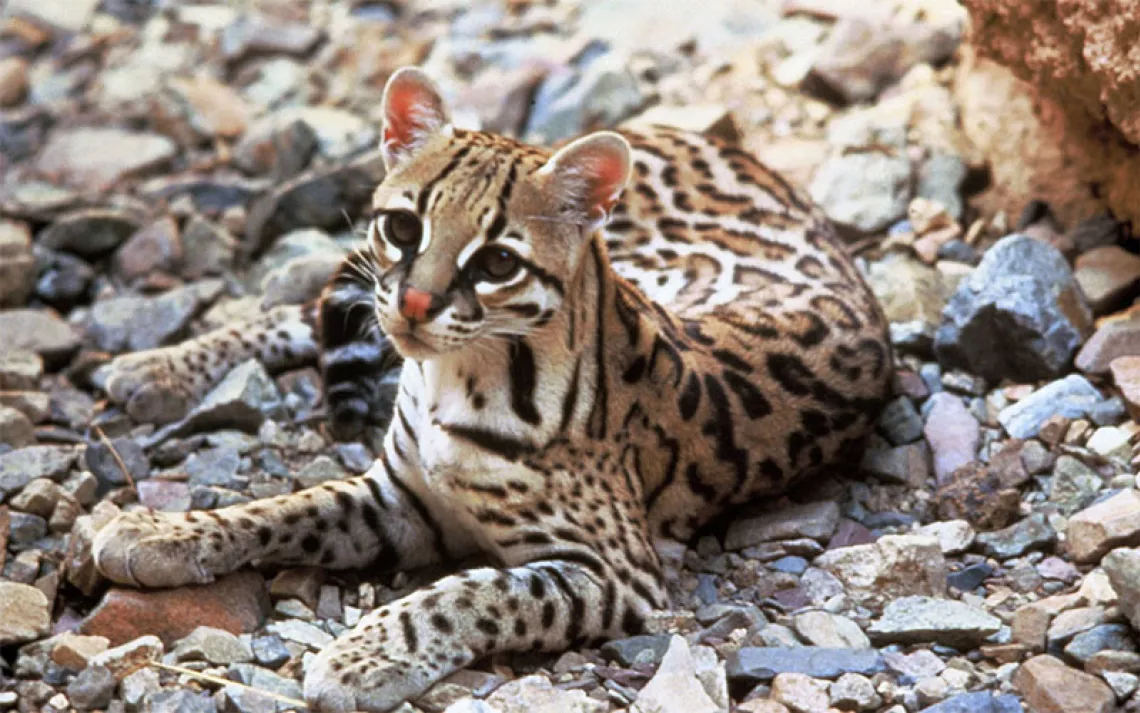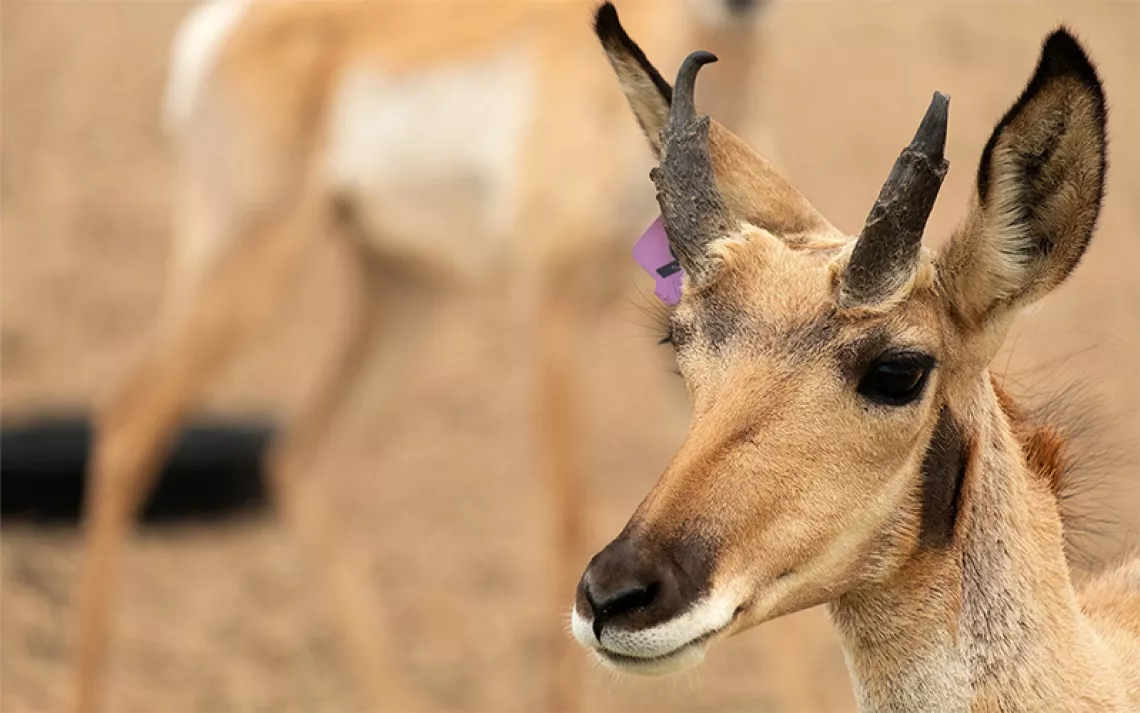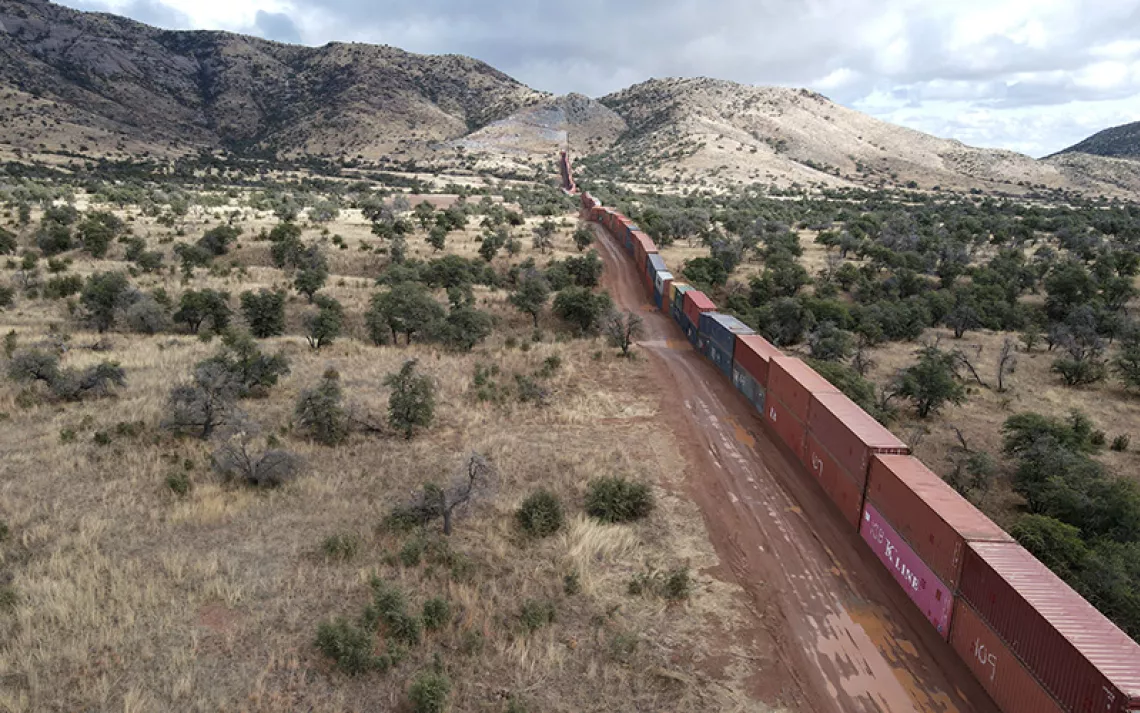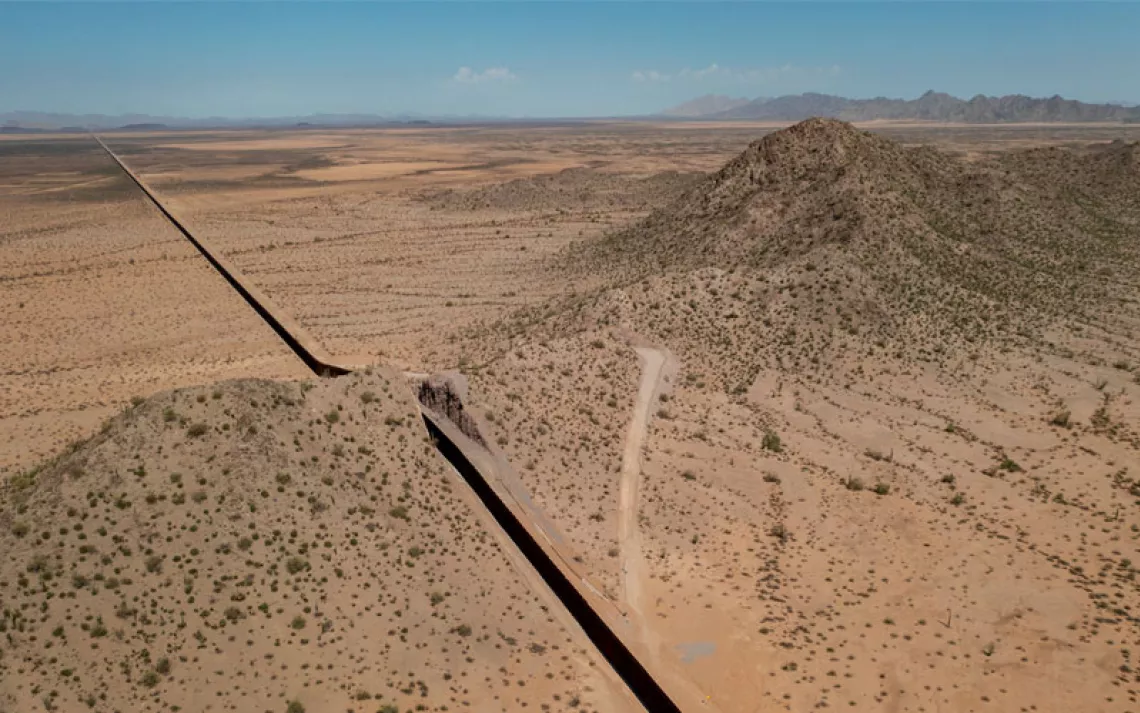Endangered Species Are Casualties of Trump’s Border Wall
The habitats for jaguars, ocelots, and wolves are being cut in half

Photo courtesy of Wolf Conservation Center
As new border wall construction rips through some of the most biologically diverse desert lands in North America, it is putting nearly 100 endangered species at increased risk. “I think many people still don't realize that the border wall—in addition to being a despicable racist symbol of Trump's hateful border policies—also will wipe some species off the face of the planet and have irreversible environmental impacts, changing these places forever,” says Laiken Jordahl, borderlands campaigner for the Center for Biological Diversity. Jordahl has traveled the extent of the US-Mexico borderlands advocating against border wall construction and routinely posts updates on social media about the topic.
Before the Trump administration came to power in 2017, there were already approximately 650 miles of barriers in place along the roughly 2,000-mile-long border. While some Democratic Party leaders have sought to downplay the extent of border wall construction, apparently in an attempt to snatch away from Trump one of his main campaign pledges, the ongoing construction does present a new threat to desert ecosystems, Jordahl says. “DHS is replacing tiny vehicle barriers—which wildlife and water could pass through with total ease—with a massive solid wall that will stop every single species of wildlife larger than a pocket mouse in its tracks.”
The Trump administration has already put in place 119 miles of new border fortifications and has plans for a total of 576 miles of wall—450 of which it expects to have completed by the end of this year—using over $11 billion in taxpayer money. The administration has now notified Congress that it is diverting another $3.8 billion from the Pentagon budget in order to wall off hundreds of more miles, a move that critics say is unconstitutional. (The Sierra Club is the lead plaintiff in a suit challenging the constitutionality of the border wall funding.)
To those unfamiliar with the borderlands of the Southwest, mention of the region may conjure images of a vast desert wasteland. In reality, the US-Mexico borderlands are some of the most biodiverse wildlands in North America.
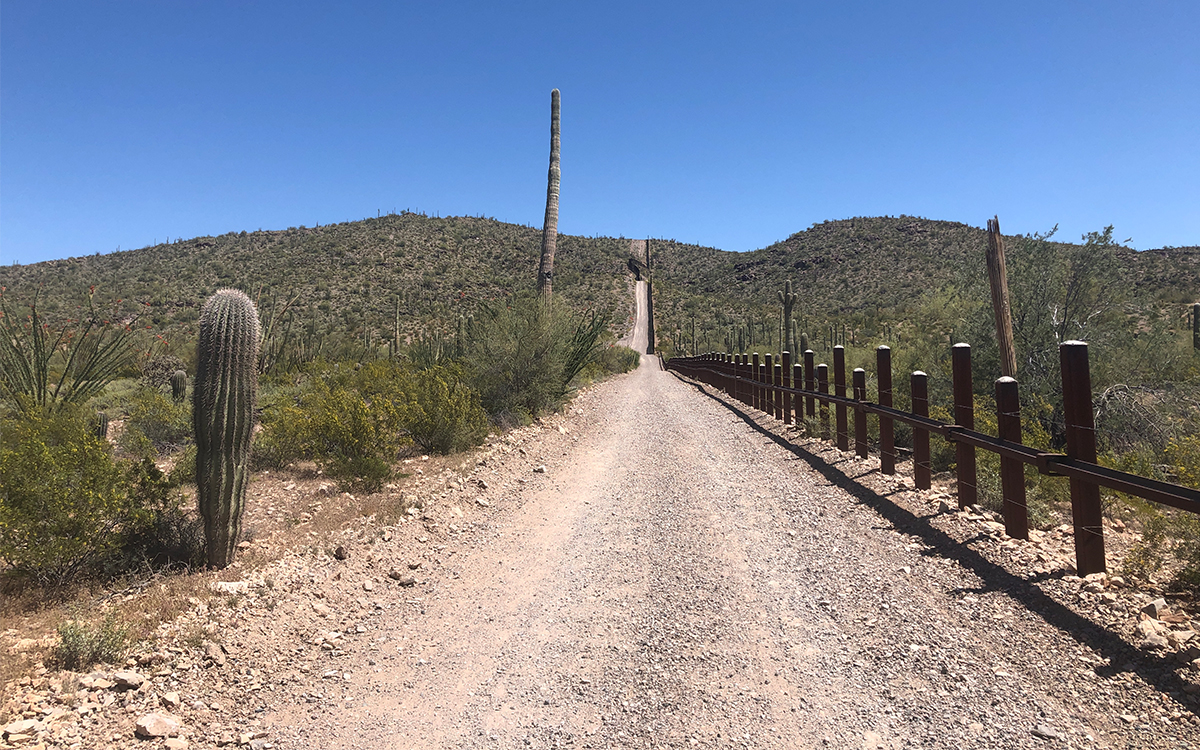
Before | Photo courtesy of Laiken Jordahl, Center for Biological Diversity

After | Photo courtesy of Laiken Jordahl, Center for Biological Diversity
Across most of the United States, such landscapes and the endangered and threatened species living within them would be protected under federal and state regulations. But using the powers available to it under a post-9/11 security law called the Real ID Act, the Trump administration has waived dozens of critical environmental safeguards along the border, including the Endangered Species Act, the Clean Water Act, the Clean Air Act, and the National Environmental Policy Act. That has left public interest watchdog groups with few legal opportunities to challenge the administration’s activities.
Here is a short list of some of the species that are being harmed or whose habitats are being fragmented as the Trump administration bulldozes the desert.
Saguaro Cactus
Jordahl has witnessed the destruction firsthand in Organ Pipe National Monument, parts of which are being razed to build a 30-foot-high wall in spite of the area’s status as federally designated wilderness. The Border Patrol and its contractors have bulldozed some 30 miles along the southern end of the park, and in the process have killed hundreds, if not thousands, of saguaro cacti, a signature plant of the Sonoran Desert. “Saguaros are being destroyed, chopped up like firewood, and discarded into trash heaps—all on sacred lands of the Tohono O'odham who actively use the area for ceremonial purposes,” Jordahl says. One site in the national monument—Monument Hill, a sacred burial site of the Tohono O’odham people—is being blown up to make way for the border wall.
Under Arizona law, if someone is found guilty of damaging or cutting down a saguaro, they could face felony charges and up to a 25-year prison sentence. Now, the Trump administration is literally bulldozing them in a national monument. “We’re watching the destruction of a national treasure,” Jordahl says. “It's heartbreaking.”
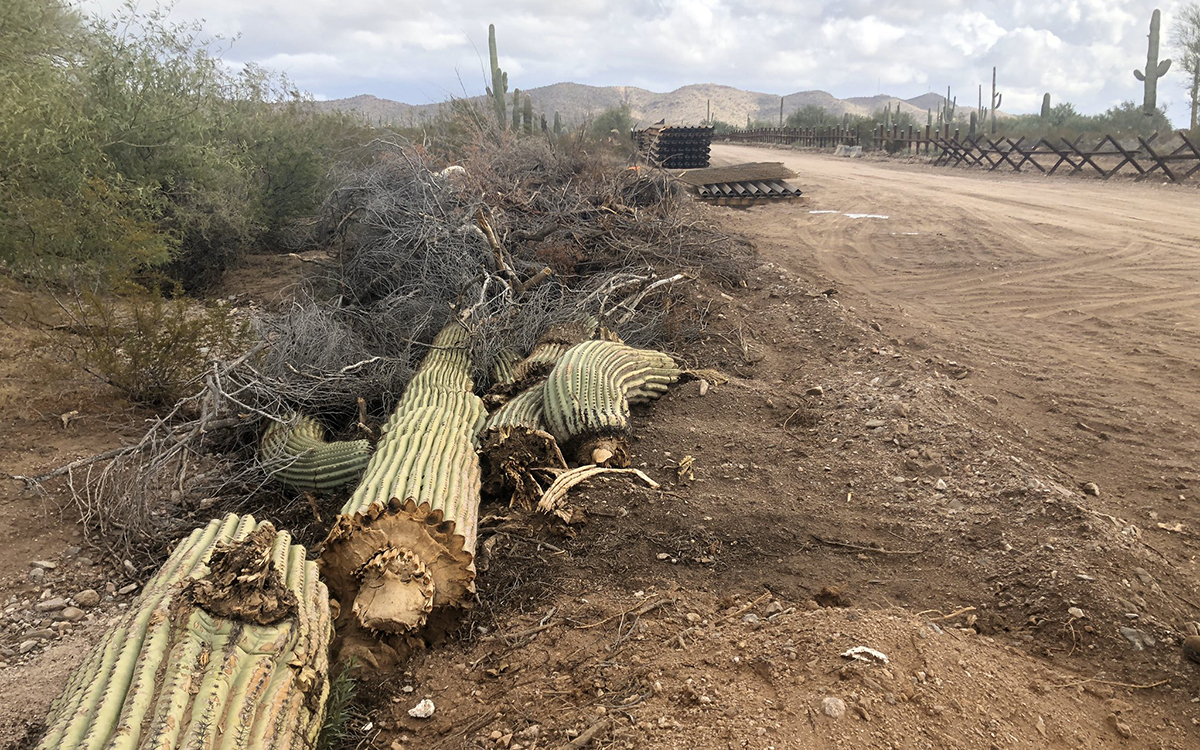
Photo courtesy of Laiken Jordahl, Center for Biological Diversity
Mexican Gray Wolf
A subspecies of the gray wolf, the Mexican gray wolf is the southernmost wolf in North America, the smallest of its species (ranging from 50 to 80 pounds) and also among the most endangered. Historically, the predator roamed throughout the borderlands of southwestern US and into northern Mexico. Today, the core of the US population straddles the border between New Mexico and Arizona, with many finding homes in the Gila Wilderness of New Mexico.
In the late 1970s, under a binational effort by the US and Mexico to save the species, seven Mexican gray wolves were captured and bred in captivity. Today, all living Mexican gray wolves are descended from those seven—putting the species at risk of a genetic bottleneck. The population of wild Mexican gray wolves in the United States currently totals 131, while the population in Mexico is around 20 to 30, says Maggie Howell of the Wolf Conservation Center. While the populations of wild wolves may be the largest it has ever been since its reintroduction in the late 1990s, it’s also significantly inbred.
As border wall construction pushes forward, wolf populations are at risk of being fragmented, thus reducing the chances that the subspecies may recover a healthy genetic diversity. “And the larger [the population] gets, the harder it will be to perform a genetic rescue to the wild population—which is basically all brothers and sisters now,” she adds.
Biologists say it is imperative for the wolves’ survival that the subpopulations in the United States and Mexico expand and are able to cross the US-Mexico border to breed with each other. In 2016, conservationists’ dreams of uniting these two populations seemed imminent when a wolf from the Mexico subpopulation ventured across the border into the United States, where he remained for a few days before returning to Mexico. Just a year later, in 2017, a female wolf crossed the border as well. “What these wolves did—and these are just the wolves we know about—is proof there is hope to connect these two subpopulations,” Howell says.
Then came the new border wall construction. “Now any wolves migrating north from Mexico or south from the US will find an impenetrable wall in their path,” Jordahl says. “They’ve already completed a huge amount of border wall in New Mexico, and we’re seeing it cut off all possible migratory paths for the wolf there, save a few high-elevation corridors in the boot heel.”
“The fact that something everybody in the recovery of Mexican gray wolves is working toward is now literally being blocked off. . . . I’m feeling the devastation to this subspecies,” Howell says. “We are blocking off a chance for these animals to one day be a self-sustaining, healthy, recovered population.”
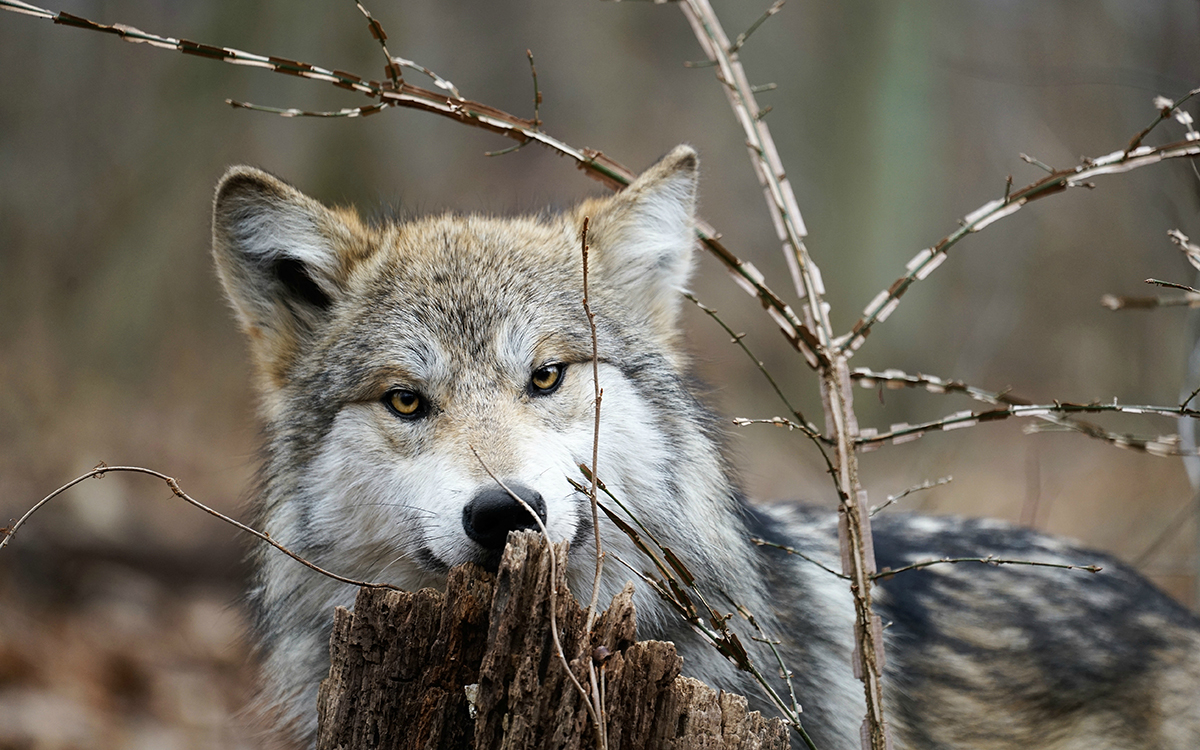
Photo courtesy of Wolf Conservation Center
Jaguar
Elsewhere along the border roams the jaguar, the spotted big cat that is the third-largest cat in the world and the largest one native to North America. Jaguars are typically found all the way from the Brazilian Amazon through to their northernmost reaches of the sky islands of Arizona and New Mexico, where conservationists are working to restore the jaguar to its traditional territory. They are listed as endangered and protected in both the United States and Mexico, and one of the main jaguar recovery goals is to allow the species to roam between the two countries. At least seven jaguars have been documented in Arizona within the past 20 years—three of them in just the past several years. But, just as with the Mexican gray wolf, border wall construction threatens to stall the species recovery.
Arizona canyons, riparian corridors, and rivers crossing the border are used by jaguars, says Sergio Avila, a big cat wildlife biologist who now works for the Sierra Club. It was on sky islands outside of Tucson, Arizona, where El Jefe—the most publicized jaguar in the United States—was frequently photographed. There have been other sightings of jaguars just north of the border in the Huachuca and Dos Cabezas Mountains, and Avila himself has photographed jaguars about 35 miles southeast of Nogales on the southern side of the border.
“All these little dots on the map basically let you see that, one, jaguars are using the sky islands,” Avila says. “Two, they're moving back and forth from the border. And three, any construction and any activities of law enforcement along that region of the border would definitely impact the movements of jaguars.”
Avila is quick to note that border militarization’s impacts on jaguars and other wildlife go beyond the physical wall. Animals are also impacted by the associated truck traffic, cranes, and machines used to build that wall—as well as the helicopters, roads, patrols, checkpoints, lights, and generators used in militarizing the southern border. “Without ever getting to see the border wall, the jaguars would not use those areas anymore because of all the movement before, during, and after construction,” Avila says. “This all amounts to destruction of public lands and is happening in places that jaguars could use or have used.”
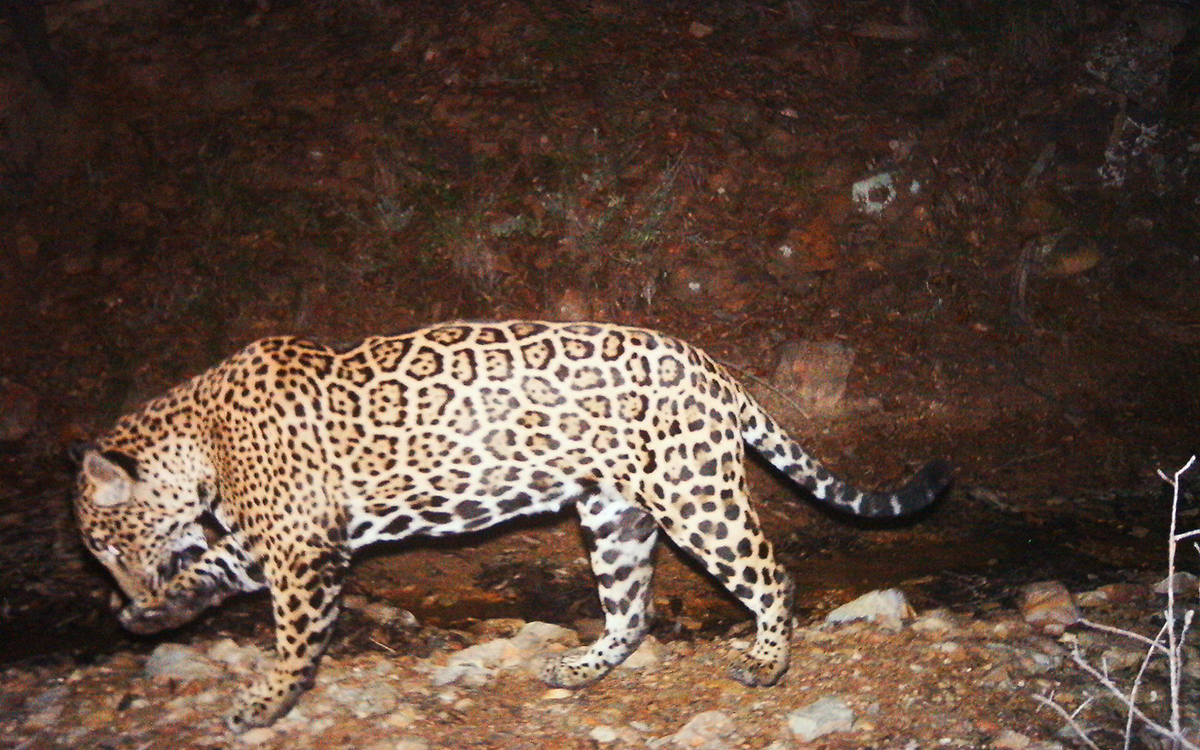
US Fish and Wildlife Service Southwest Region
Ocelot
The Tamaulipan thornscrub of the Rio Grande Valley is the native habitat of the ocelot—a cinnamon-colored, spotted cat that weighs around 30 pounds and is sometimes referred to as the “dwarf leopard.” Biologists estimate that there are a scant 50 ocelots left in the United States. Their recovery is complicated by the fact that less than 1 percent of the species’ native habitat remains intact within South Texas, and border wall construction threatens to destroy even more. As construction continues through the Lower Rio Grande Valley National Wildlife Refuge—a constellation of nearly 150 wildlife refuge tracts connecting pockets of wildlife in the valley—the opportunities for the ocelots in Texas to connect and breed with the populations in Mexico are becoming slimmer.
“This is a death sentence because they have nowhere to go,” Avila says. “They have no connections, no genetic inter-breeding, and will be impacted by habitat destruction.”
In addition to sightings in Texas, five ocelots have been spotted in Arizona since 2009. Researchers believe they came from a population located just south of the border in the Mexican state of Sonora. That is where, in the early 2000s, Avila and other researchers were granted permission by a private ranch to set up cameras to photograph jaguars—which they did successfully several years later. But the cameras also captured footage of another protected species: the ocelot. This “made the rancher’s heart melt,” Avila recalls. “It made him commit directly to conservation. He expressed his love for this species, and in that moment he saw the photograph, he said, ‘I'm going to remove all the cattle I have in that canyon, because from now on this canyon will be the ‘Canyon of the Ocelot.’” The ranch was eventually designated as a protected national area in Mexico.
Avila’s team identified 18 different ocelots over eight years. Most important, the team documented photos of kittens, proving that there were both males and females in the area—the northernmost known wild breeding population of ocelots. This research led to a critical addition to the recovery plan for ocelots, which originally did not consider the Arizona-Sonoran subpopulation of ocelots.
Last year, however, the Department of Homeland Security announced plans for a 26-mile stretch of border wall just north of this ocelot population. While those plans were put on hold due to insufficient funds, Trump’s recent victory in securing $7 billion for border wall construction may put those plans back into action.
As with other species, the road construction, Border Patrol traffic, lighting, noise, and air pollution that comes with border militarization makes life more difficult for ocelots. “All of these things combined create impacts far beyond the physical footprint of the wall,” says ocelot biologist Jessica Moreno. “Ocelots are very sensitive to those kinds of disturbances, so they would not even try to cross. So a wall hampers all of our investments in protecting land on both sides for the recovery of the ocelot in Arizona.”
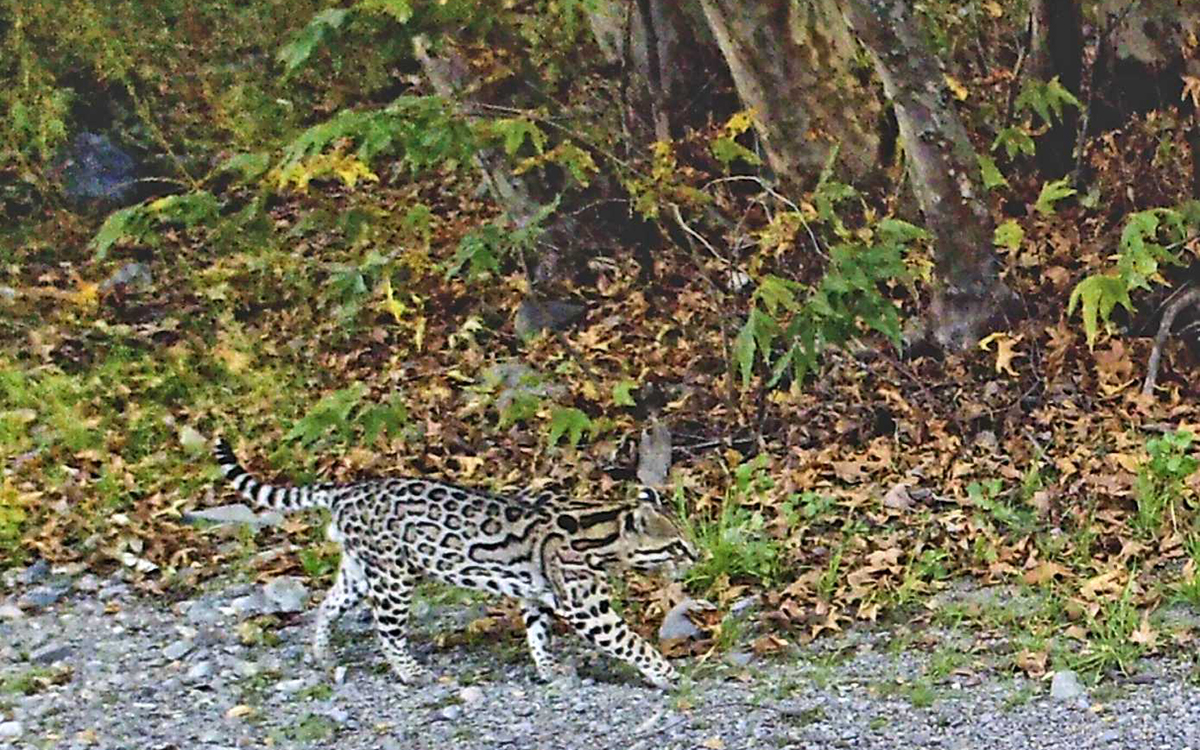
Photo courtesy of Jim Rorabaugh
Peninsular Bighorn Sheep
Inhabiting dry and rocky desert slopes, canyons, and washes ranging from the San Jacinto and Santa Rosa Mountains of California all the way south to Baja California, Mexico, the endangered peninsular bighorn sheep finds itself under threat from a combination of border wall construction and other development in its core habitat. This development threatens to further fragment habitat connectivity and isolate the remnants of the species from each other. The San Diego Zoo Institute for Conservation and Research is conducting research exploring cross-border connectivity between peninsular bighorn sheep populations, and its 2012 population survey showed a much larger population of bighorns just south of the border than had been expected.
During the past two centuries, this subspecies of bighorn sheep has suffered from habitat loss, disease, and overhunting. By the 1990s, its population dipped to as low as 276 animals, and it was placed on the endangered species list in 1998. While the population has since rebounded in the United States and is recovering in Mexico, careful management of the species is needed to continue the recovery. “We’re at a stage where there are around 800 peninsular bighorn [in the US], and that's been a slow process getting back,” says Jim DeForge, executive director of the Bighorn Institute. “That number has been going up and down.”
Connectivity across landscapes is vital for the peninsular bighorn sheep to flourish, according to a cross-border collaborative study between the San Diego Zoo Institute for Conservation and Research and the Universidad Autónoma de Baja California. The study determined the species has retained a “substantial genetic variation” but that border wall construction or further development along the border “could have severe consequences” on the species’ demographics and genetic diversity as a whole and increase the extinction risk of the subpopulation spanning the border.
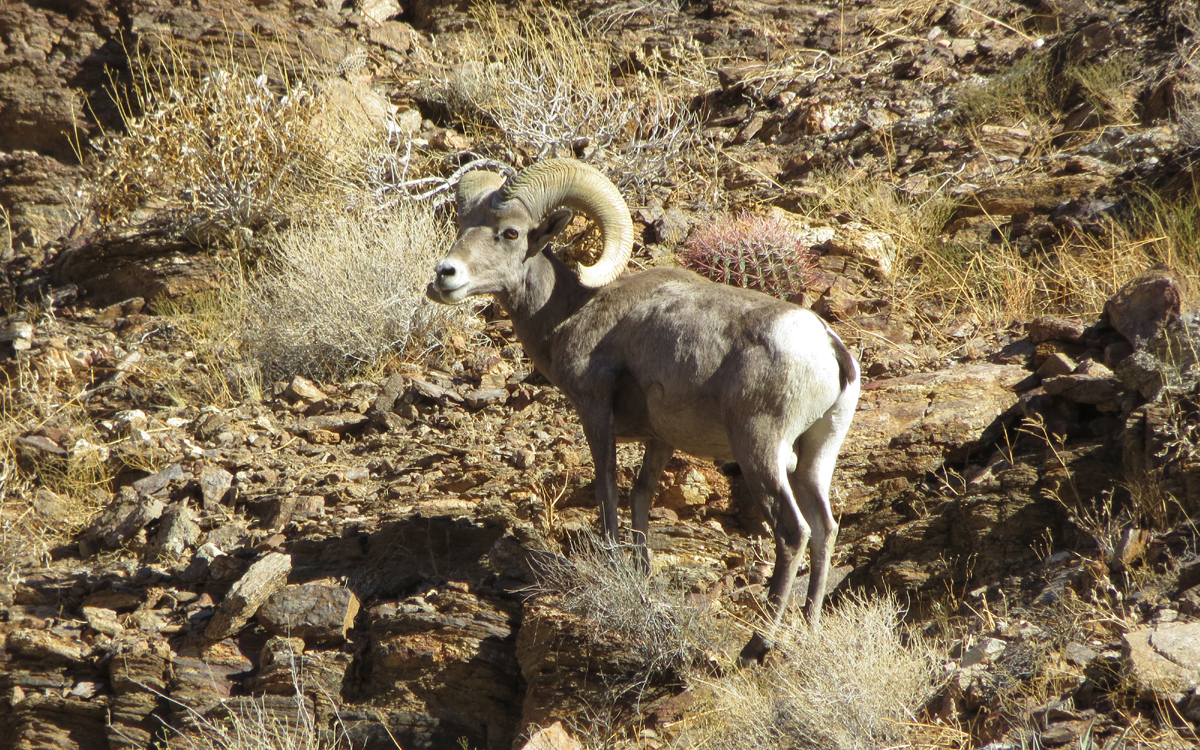
Photo courtesy of Bighorn Institute
Aquatic Species
Not only is the border wall construction bulldozing protected flora, but it also threatens desert aquifers like the one feeding Organ Pipe National Monument’s Quitobaquito Springs. Some environmental researchers and activists say that the DHS’s massive groundwater withdrawals for concrete mixing is reckless and threatens this unique oasis.
Quitobaquito Springs is the only habitat in the world of the Quitobaquito pumpfish and one of just two habitats of the Sonoyta mud turtle. Border wall contractors are extracting water from the aquifer that feeds the springs; and while no one knows exactly how much, some estimates project that as much as 50 million gallons of groundwater may be required for border wall construction on the Arizona border.
Several hundred miles east of Organ Pipe, similar rare aquatic resources at the San Bernardino National Wildlife Refuge are also in peril. There, DHS is drawing water from aquifers that are the sources of aquatic habitats called ciénegas—a type of desert wetland. The San Bernardino ciénegas are home to four endangered species of Yaqui fish: the topminnow, catfish, slider, and chub, which live nowhere else in the United States. “We could see these habitats—the entire habitats for all of the Yaqui fish—wiped off the face of the map in the next year or number of months,” Jordahl from the Center for Biological Diversity says. “It's so heartbreaking to see them sucking up this groundwater—a nonrenewable resource in the desert . . . much of which dates back to the Ice Age . . . and which would never be allowed if it wasn’t for the waiver of the Endangered Species Act. Giant tanker trucks fill up at the wells all day long, taking out 112,000 gallons of water each shift.”
“They don't have to suck the entire aquifer dry to damage the springs,” Jordahl adds. Just by dropping the water table by a foot or two, water flow to the springs may stop or slow, in the process destroying the ciénegas. This would not only mean death for the endangered aquatic species but would also jeopardize all species that depend on the water there, including the endangered Chiricahua leopard frog, endangered northern Mexican garter snake, protected desert tortoises, as well as other birds and mammals that drink from these pools.
 The Magazine of The Sierra Club
The Magazine of The Sierra Club
